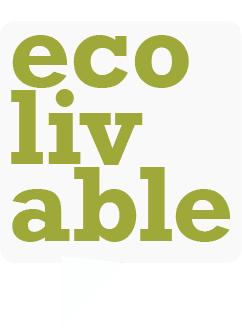In times of disaster, whether caused by natural events like hurricanes, earthquakes, or civil unrest, the ability to defend oneself becomes critical. While owning a firearm is one method of protection, there are numerous other ways to safeguard yourself and your family when faced with danger. In a crisis, individuals may panic, leading to unpredictable behaviors that can threaten personal safety. Preparing to defend yourself without a gun requires a multifaceted approach that emphasizes awareness, self-defense skills, and the use of everyday items as tools for protection.
Why Self-Defense Is Important in Emergencies
During emergencies, public services such as police and emergency medical teams can be overwhelmed, and the social fabric of communities may fray. Looting, violence, and other criminal activities can arise from desperation and fear. Being prepared to defend yourself can mean the difference between safety and vulnerability. Here are several key points to consider regarding self-defense during a disaster:
- Heightened Vulnerability: Disasters often disrupt normal life, causing stress and uncertainty. In these moments, individuals may be more susceptible to harm from opportunistic criminals who may take advantage of the chaos. Having a plan for self-defense ensures that you can respond effectively to threats.
- Understanding the Risks: Familiarizing yourself with the potential threats in your environment can help you prepare. This may include understanding common risks associated with specific disasters, such as flooding, power outages, and social unrest, so that you can develop an appropriate response plan.
- Community Breakdown: During significant emergencies, community solidarity can weaken. A preparedness mindset allows individuals to protect themselves and their property when conventional support systems are unavailable.
Practical Self-Defense Strategies Without a Firearm
If you find yourself in a dangerous situation without a gun, there are several practical self-defense strategies you can employ:
- Situational Awareness: Being aware of your surroundings is the first line of defense. Pay attention to your environment and the behavior of those around you. Look for exits, identify potential threats, and avoid places that seem unsafe. Practice staying alert and tuned into your instincts; they can often guide you toward safe choices.
- Learn Basic Self-Defense Techniques: Taking self-defense classes can empower you with skills to protect yourself effectively. Training in martial arts, Krav Maga, or other self-defense systems provides practical techniques for defending against an attacker. Focus on simple moves that can be executed under stress, such as:
- Strikes: Learn how to deliver effective strikes to vulnerable areas of the body, such as the eyes, nose, throat, and groin.
- Escape Techniques: Knowing how to break free from grips or holds can give you the advantage you need to escape a threatening situation.
- Using Leverage: Understanding how to use your body weight and an opponent’s momentum can help you neutralize a threat without requiring excessive strength.
- Improvised Weapons: Many everyday items can serve as effective self-defense tools in emergencies. Common household objects can be utilized creatively to fend off an attacker:
- Flashlights: A sturdy flashlight can be used to strike an assailant, while the beam can temporarily blind them, giving you a chance to escape.
- Keys: Holding keys between your fingers can create an improvised weapon that can inflict pain if you need to defend yourself.
- Bags and Backpacks: A bag can be used to shield yourself or throw it at an assailant, providing an opportunity to escape.
- Umbrellas: A strong umbrella can serve as both a shield and a weapon to jab or poke if necessary.
- Form a Safety Plan: Before a disaster strikes, create a family safety plan that includes:
- Escape Routes: Identify safe pathways and exits from your home and community.
- Meeting Points: Establish places where you and your family can reunite if separated.
- Communication Strategies: Decide on methods for staying in touch, especially if phone lines are down. This could include using walkie-talkies or pre-arranged signals.
- Stay Calm and Think Clearly: In a threatening situation, panic can lead to poor decision-making. Practicing mindfulness techniques can help you remain calm and focused. Deep breathing, visualizing a safe place, or even rehearsing your escape plans mentally can help prepare you to react effectively under pressure.

Community Resources for Safety
Engaging with your community can enhance your safety during emergencies. Building relationships with neighbors and local organizations can create a support network that helps everyone stay informed and secure. Consider these options:
- Neighborhood Watch Programs: Join or establish a neighborhood watch program to enhance collective vigilance. Working together, community members can monitor each other’s safety and report suspicious activity.
- Self-Defense Workshops: Participate in or organize self-defense workshops within your community. Bringing in local instructors to teach basic self-defense skills can empower individuals while fostering a sense of solidarity.
- Emergency Preparedness Groups: Get involved with local emergency preparedness groups that focus on disaster response training and resource sharing. This can include learning about first aid, fire safety, and other essential skills that contribute to personal and community resilience.

Conclusion
Defending yourself during a disaster is a critical aspect of preparedness, especially if you do not own a firearm. By developing situational awareness, learning self-defense techniques, and improvising with everyday objects, you can create a robust plan for personal safety. Engaging with your community, forming safety networks, and preparing for emergencies will empower you to navigate crises with confidence. Ultimately, being prepared to defend yourself is not just about physical strength; it’s about mental resilience, awareness, and the proactive steps you take to ensure your safety and well-being in uncertain times.



